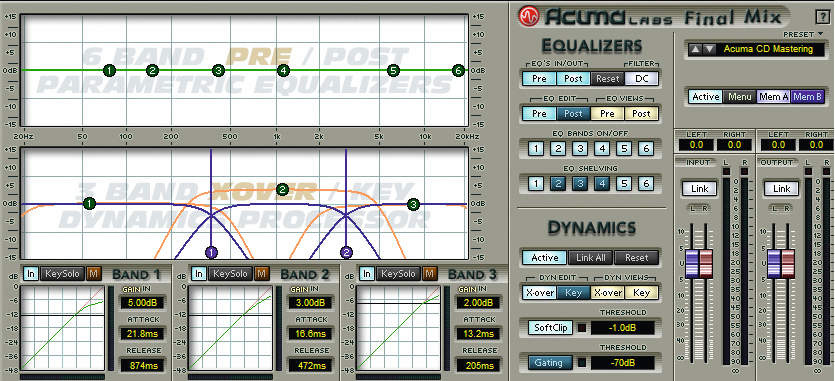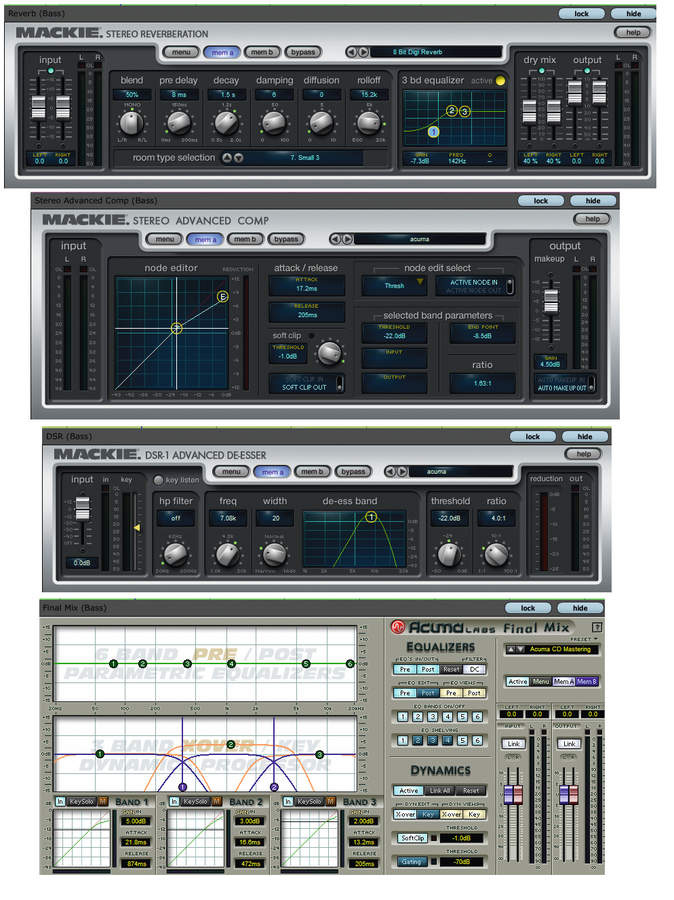MusicRadar Verdict
Although it´s not as much of a leap as version 2 was, Tracktion 3 is still highly impressive. Crucially, the new features don´t compromise the software´s legendary usability at all.
Pros
- +
An elegant, easy-to-use MIDI/audio workstation. Folder tracks. Excellent pitchshift/ timestretch algorithm.
Cons
- -
Toy-box styling. Graphics can grind with large projects. Laborious plug-in authorisation process. Variable quality of supplied loops.
MusicRadar's got your back




Hunting through endless drop-down menus, pop-up windows and minute, obscurely labelled icons might be a good indication that your software is packed with features, but for some, this is more of a confusing distraction than a bonus.
Those who have found Tracktion to be their preferred DAW - or ‘Tracktioneers´ as they have wryly called themselves - have been enjoying an idyllic life of single screen-based composition since v1. By the time Tracktion 2 came out, the DAW had been snapped up by Mackie, who allowed the program to flourish naturally, rather than overloading it with ‘hot features´ and the like.
Improvements
With version 3, Mackie offer many workflow enhancements aimed at squashing some of the criticisms raised last time around, as well as improved control surface support and some audio engine improvements.
For those who are unfamiliar with it, Tracktion takes a one-window approach to MIDI sequencing and audio recording in order to keep things simple. Each track can contain MIDI or audio information, and all data on a track is edited directly in the project window - the track´s lane expands to show the audio or MIDI editor and the relevant editing tools.
Tracktion then applies a modular system of what it calls ‘Filters´ to each track.
A Filter is simply any type of plug-in, be it a volume fader, an output meter or a VST effect or instrument. Filters can be quickly added, rearranged, muted or deleted at the click of a button. It´s a very logical and straightforward system, but this is also its limitation: in early versions of Tracktion, it simply wasn´t possible to set up a send effect, for example. However, this has been overcome with ‘Rack Filters´, a modular processing system built in a similar vein to that of EnergyXT.
Want all the hottest music and gear news, reviews, deals, features and more, direct to your inbox? Sign up here.
Functionality
Rack filters enable some of the functions of the more traditional sequencers - such as the good old send effect - and have much more advanced functionality for anyone willing to get stuck in. Throw two single-oscillator VST synths into a rack filter, add a couple of volume Filters and a resonant filter plug-in and you´re effectively building a modular synth, for example. So what´s new for version 3? Firstly and most significantly, we can now make use of Folder tracks.
In previous iterations, a complex project would often entail endless mouse-scrolling down, down and further down to reach your last track. Now, sets of tracks can be grouped, compressed, split and rearranged from within Folder tracks, with Filters and volume applied to all. This simple but beautifully executed feature is, to our minds, worth the upgrade alone.
On top of this, Mackie have implemented the excellent Elastique Efficient timestretch/ pitchshift algorithm, making audio timestretching, root shifting and formant manipulation more precise and laden with fewer artifacts.
The introduction of Bezier-curved automation tracks significantly improves on the previous straight-line method of automating VST instruments and effects, and makes gradual tempo changes in conjunction with the EE algorithm a joy to implement.
Tracktion now also intelligently caters for parameter automation. Switch-based parameters on VST effects and instruments operate correctly when automating stepped curves, and VSTXML support has been added, meaning that VST automation parameters are grouped and named sensibly, without the need to trawl through massive, tedious lists of parameters on screen. In short, Tracktion´s automation system has been tightened up significantly, putting it easily on a par with the competition in this area.
Other tweaks include loop browsing, tidying up of the Tracktion Edit folder for each project, a resizable context window, Bypass Filters and Render Marked Region options, preset selections in the Filter menu, new Marker tracks, safe record and more - all of which add to the experience, without compromising the inherent useability of the program.
New users
So is it worth the upgrade? Absolutely: Folder tracks and the updated audio timestretch algorithm make it a no-brainer for T2 users. Meanwhile, the package of instruments and effects Mackie have put together make it a more than viable starter system for new users.
Undoubtedly, some will bemoan the pastel colour scheme, which gives the misleading impression that Tracktion is something of a toy, and - here´s the crunch - the total lack of a conventional mixer. We´ve said this before, though: if you moan about the lack of a mixer, you´ve really missed the point of Tracktion.
Our only real complaint concerns working with large multitrack projects where scrolling and editing can be graphically clunky, with response times leaving something to be desired. Overall though, Tracktion 3 is as beautifully elegant as ever. It´s still hugely intuitive, and its new features make it more powerful and easier to stay organised with than ever. This is one deeply powerful DAW that never gets in the way of that all-important creative flow.
MusicRadar is the number 1 website for music makers of all kinds, be they guitarists, drummers, keyboard players, djs or producers...
GEAR: We help musicians find the best gear with top-ranking gear round-ups and high- quality, authoritative reviews by a wide team of highly experienced experts.
TIPS: We also provide tuition, from bite-sized tips to advanced work-outs and guidance from recognised musicians and stars.
STARS: We talk to musicians and stars about their creative processes, and the nuts and bolts of their gear and technique. We give fans an insight into the actual craft of music making that no other music website can.
